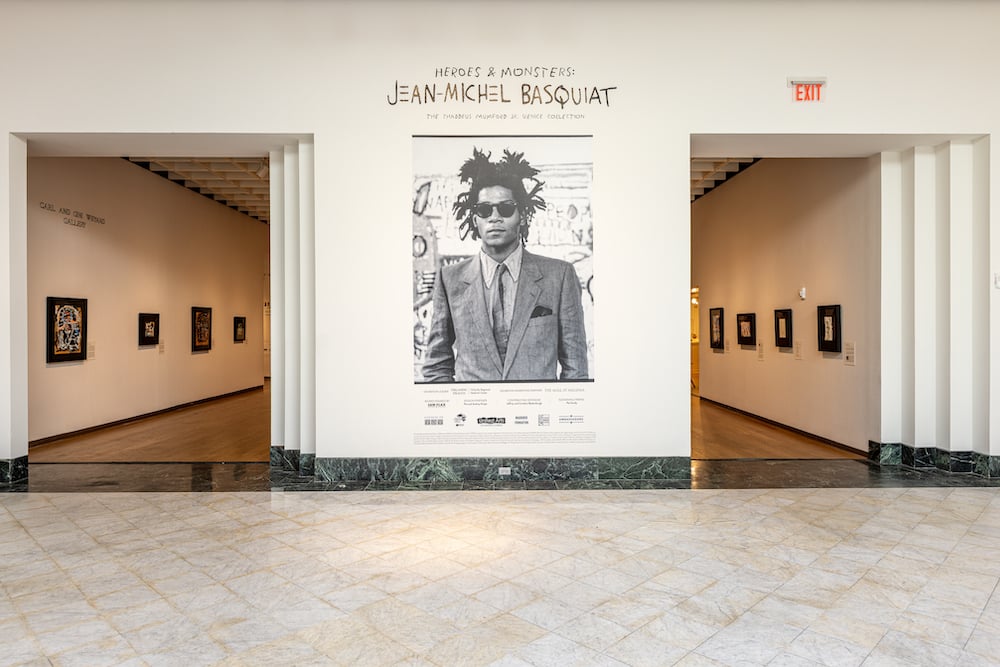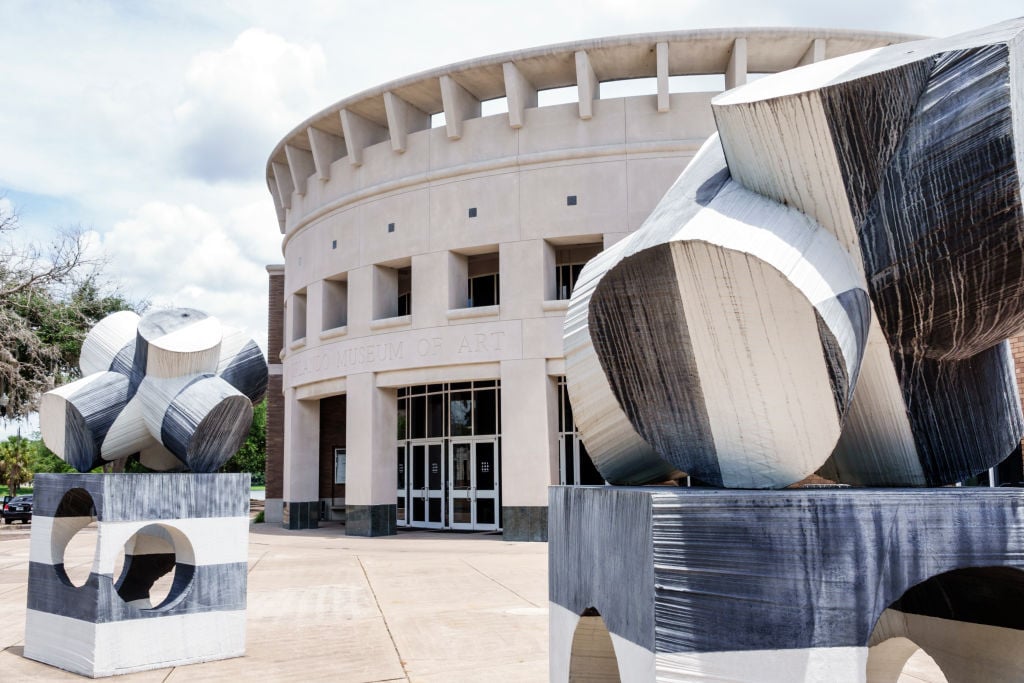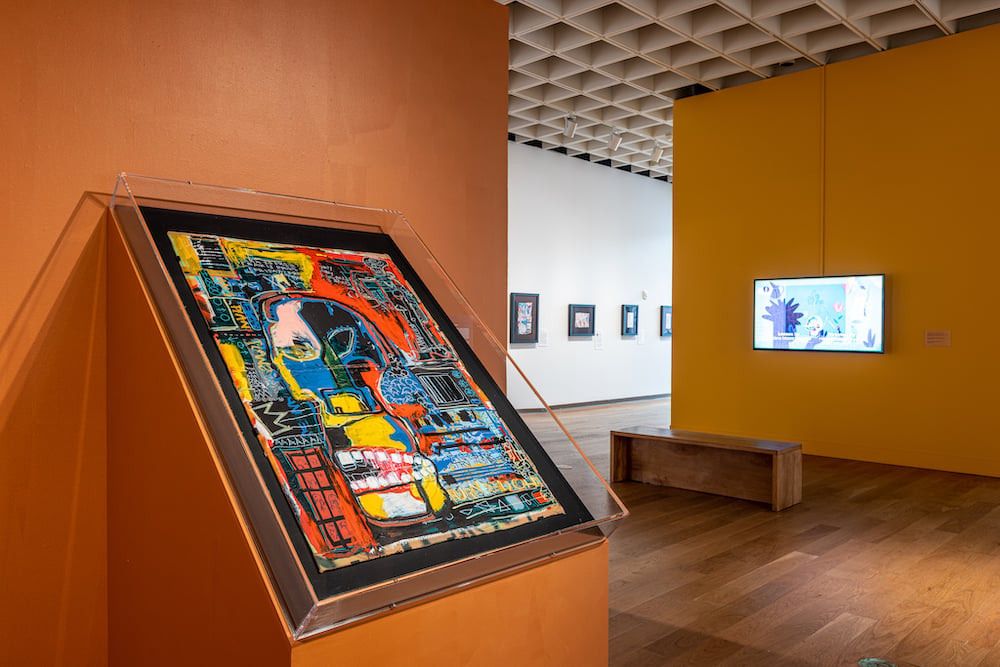Crime
An Auctioneer Has Confessed to Playing a Major Role in Producing Fake Basquiats Displayed at the Orlando Museum of Art
Los Angeles auctioneer Michael Barzman pled guilty to lying to the FBI about creating the works.

Los Angeles auctioneer Michael Barzman pled guilty to lying to the FBI about creating the works.

Sarah Cascone

The exhibition had one of those fairytale backstories: the Orlando Museum of Art had lucked into a storage unit full of previously unseen paintings by Jean-Michel Basquiat, which it was showing to the public for the first time.
Now, more than nine months after a dramatic FBI raid shuttered the exhibition “Heroes & Monsters,” which ran from February to June 2022, the truth is out. The paintings were not the work of the late street artist—whose work has sold for over $100 million at auction—but a series of forgeries by 45-year-old Los Angeles auctioneer Michael Barzman and an accomplice identified only as J.F.
On April 11, the United States attorney’s office for the Central District of California charged Barzman with making false statements to the FBI. He had previously denied both having painted the works or having had someone make them for him when speaking to the FBI in 2022. He has pled guilty to the charge, and faces up to five years in jail.
“J.F. spent a maximum of 30 minutes on each image and as little as five minutes on others, and then gave them to [Barzman] to sell on eBay,” the plea agreement said, according to a statement from the attorney’s office. “[Barzman] and J.F. agreed to split the money that they made from selling the fraudulent paintings.”

Orlando Museum of Art. Photo: Jeffrey Greenberg/Education Images/Universal Images Group via Getty Images.
The two are said to have created 20 to 30 fake works around 2012 that they attributed to the artist. Barzman, whose business was auctioning off the contents of abandoned storage units, concocted a fake provenance for the works: Basquiat was said to have sold the cardboard paintings to television screenwriter Thad Mumford for $5,000 in 1982. Decades later, Mumford was behind in rent payments on his storage unit, and its contents went up for auction.
It was a compelling story, and it was one that inspired storage hunter William Force and his financial backer, Lee Mangin, to purchase the lot for $15,000.
After a messy lawsuit surrounding one of its opinions, the Basquiat estate had shut down its authentication committee in 2012, making it difficult for Force and Magnin to get anyone to officially weigh in on the question of authenticity.

Untitled (Self-portrait with his cowboy hat and wearing Leonardo da Vinci’s flying suit) allegedly painted by Basquiat in 1982 and painted on corrugated cardboard. Via Orlando Museum of Art.
But the fake works nonetheless found champions in some art experts, including Basquiat scholar Jordana Moore Saggese and curator Diego Cortez, founding member of the Basquiat estate’s authentication committee who died in 2021. Both agreed the works looked legitimate (according to her affidavit, Moore Saggese in said she was paid $60,000 by the Basquiat artworks’ owners in 2017 to assess the paintings). Handwriting expert James Blanco also found that the works’ signatures were a match to that of the artist.
Due to these factors, it seems that the Orlando Museum leadership was confident that everything was legitimate and the museum published an exhibition catalogue with new essays on the 25 works, and touting a 500 percent uptick in attendance driven by the show.
Nevertheless, suspicion about the works arose quickly after the show opened in Orlando in February 2022. The main red flag was a FedEx logo on one of the pieces of cardboard—the company hadn’t introduced it until 1994, six years after Basquiat’s death. (The FBI’s Art Crime Team later confronted Barzman about one of the works, pointing out that one of the works had been painting over a mailing label with his name.)
The raid didn’t happen until June, less than a week before the show was set to close—but the FBI had been investigating the case for years.

Installation view of the “Heroes & Monsters: Jean-Michel Basquiat, The Thaddeus Mumford, Jr. Venice Collection” at the Orlando Museum of Art, 2022. Courtesy of the OMA.
Mumford, it turned out, had told an FBI agent back in 2014 that he had never purchased any Basquiats or kept any in his storage unit. He even signed an FBI affidavit the year before he died in 2018, admitting that “at no time in the 1980s or at any other time did I meet with Jean-Michel Basquiat, and at no time did I acquire or purchase any paintings by him.”
Following the FBI’s seizure of the suspect works, the museum fired Aaron De Groft as its director and chief executive. He has not been charged with any wrongdoing. The beleaguered institution has formed a “task force” to help rebuild the public’s trust following the fiasco.
An archived version of Barzman’s auction website stated that he “specialize[d] in storage auctions, abandoned property, buying gold and silver, collectibles, Hollywood memorabilia, classic cars, vintage instruments and more,” noting that “since 2015, Michael has been a bonded auctioneer & appraiser of rare memorabilia and collectibles.”
The FBI investigation into the case is still ongoing.
More Trending Stories:
A Museum Has Located a Missing Figure That Was Cut Out of This 17th-Century Family Portrait
Ai Weiwei Has Recreated Claude Monet’s Iconic ‘Water Lilies’ Using 650,000 Multi-Colored Lego Bricks
London Will Honor the Victims of the Transatlantic Slave Trade With a New Memorial in the Docklands